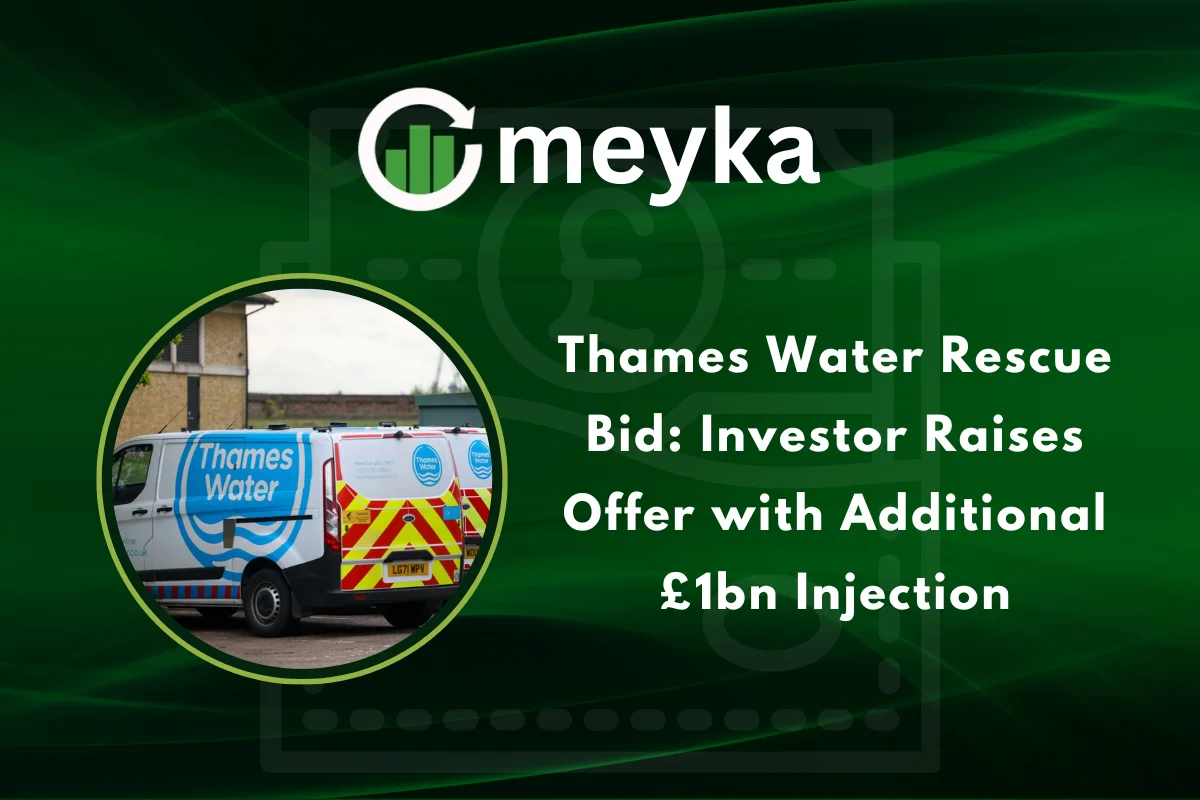Thames Water Rescue Bid: Investor Raises Offer with Additional £1 Billion Injection
Thames Water, the UK’s largest water and sewage company, is once again at the center of high‑stakes financial negotiations. Its major creditor group has submitted an enhanced rescue bid with an additional £1 billion injection, raising hopes that the troubled utility can avoid a government-led takeover or temporary nationalization. The move underscores how serious investors are about keeping Thames afloat, but also highlights the enormous challenges ahead.
Growing Debt, Shrinking Confidence
Thames Water has long been burdened by massive debt. According to its most recent financial reports and public filings, the company’s liabilities amount to nearly £20 billion. The size of the debt has created intense pressure on its lenders, customers, and regulators. If a sustainable solution is not found, Thames risks being placed under a Special Administration Regime (SAR), a form of temporary nationalization intended to stabilize essential public services.
Earlier this year, U.S. private equity firm KKR was reportedly set to inject £4 billion into Thames Water. However, KKR later pulled out of the deal. Its exit created a void that prompted creditors to step in with a fresh turnaround plan.
What the New Bid Proposes
The new rescue proposal has been submitted under the name London & Valley Water (L&VW), a consortium composed of major debt holders. In this latest plan, L&VW pledges:
- £3.15 billion in fresh equity to help stabilize the company’s operations.
- A 25% write‑off on its most senior Class A debt, which amounts to roughly £4 billion.
- A full write-off of Class B debt, estimated at around £1 billion.
- An additional injection of £1 billion, the “sweetener” offered to regulators and other stakeholders to make the deal more attractive.
According to L&VW, the total planned investment across operating and capital expenditures over the next five years is £20.5 billion. This is not just about paying off debt; the bid also includes a Performance Improvement and Turnaround Plan (PITP), which ties future equity and operational goals to regulatory oversight by Ofwat, the Environment Agency, and other entities.
Importantly, under this rescue plan, no dividends would be paid while Thames remains under the turnaround regime.
Why This Offer Matters
This new funding bid is a critical vote of confidence from Thames Water’s creditors. By offering a significant equity injection and forgiving a substantial amount of debt, they demonstrate a long-term commitment to turning the company around.
For regulators like Ofwat, the plan offers a market-led solution (instead of state takeover) that includes strong accountability. L&VW’s proposal suggests a hands-on oversight structure to deliver operational improvements, not just financial fixes.
From a business viewpoint, this move could salvage infrastructure investment. Thames Water needs capital not only to pay down its debts, but to maintain and upgrade its aging network of pipes, sewage systems, and treatment plants. Over the next five years, L&VW’s targeted investment would fund critical upgrades and environmental compliance projects.
Risks Still Loom Large
While the new bid is ambitious, it faces several hurdles and risks:
- The total sum being proffered, though large, may still not be enough to fully resolve Thames Water’s structural problems or to bring its net debt to a sustainable level.
- Some interest rate and debt‑haircut terms could be challenged by different creditor classes who might view the deal as unfair.
- Political and regulatory risks remain. If the deal is rejected, Thames Water could enter the Special Administration Regime, which could force temporary nationalization.
- Environmental stakeholders are watching closely. Some worry that lenient performance targets could lead to continued pollution or under‑investment in clean water infrastructure.
What This Means for the Market and Investors
This rescue bid is not just about water; it also has implications for investors and the stock market:
- Debt holders like Elliott Management, SilverPoint Capital, and major institutions are actively participating in this rescue. Their willingness to write off debt and commit fresh capital suggests they do not intend to abandon the project.
- The deal could affect how utilities are valued going forward, especially ones with high leverage. A successful turnaround might spark renewed interest in infrastructure investments.
- Though Thames Water is not publicly traded, the financial engineering and restructuring efforts echo a broader trend in capital markets: combining tech-driven risk modeling (sometimes via AI) with traditional investment in infrastructure. While Thames itself isn’t an AI stock, the behavior of its investors may inform future stock research in infrastructure and regulated utilities.
Stakeholder Views
- L&VW: The consortium argues its plan is the fastest and most reliable route to a sustainable turnaround that avoids state control.
- Ofwat: As the regulator, Ofwat needs to ensure that any rescue plan delivers on service, environmental goals, and long-term financial stability.
- Government: Politicians have expressed caution about nationalization but want a solution that protects customers and the taxpayer.
- Environmental Groups: Some are skeptical, warning that rescue plans must not compromise on pollution targets or delay investment in sewage and water treatment.
What Happens Next?
Several steps will determine the outcome:
- Regulatory Review: Ofwat and other bodies will examine the structure and governance of L&VW’s plan.
- Legal Process: Any restructuring needs formal approval via court or regulatory mechanism.
- Execution of Turnaround: If approved, L&VW must deliver on the performance plan (PITP) and begin major infrastructure investments.
- Long-Term Monitoring: Debt write-offs, governance changes, and operational improvements will be closely watched by stakeholders over several years.
FAQs
KKR withdrew from the deal after conducting due diligence, likely due to the size of the debt burden and the complexity of turning the business around.
Ofwat, as the UK water regulator, must review and approve any rescue plan to ensure that it delivers improvements in service and environmental standards while safeguarding financial stability.
Quite risky. Investors are writing off billions in debt and committing large equity injections. Their reward depends on Thames Water successfully executing its turnaround plan and meeting future regulatory and financial goals over several years.
Disclaimer:
The content shared by Meyka AI PTY LTD is solely for research and informational purposes. Meyka is not a financial advisory service, and the information provided should not be considered investment or trading advice.






